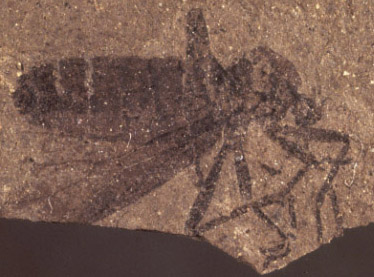Congratulations to the following 2002 Evolving Earth Student Grant recipients:
Barclay, Richard
Enrolled in a PhD program, University of Colorado, Boulder
“An Integrated Study of Post K-T Boundary Biological Recovery.”
This project will be an integrated fieldwork based analysis of the earliest Paleocene recovery of the plants and the synchronous diversification of mammals within a time framework established using polled zonation and magnetic reversal sequences in the Eastern Denver Basin.
Burgett, Sean
Undergraduate Student, Western Oregon University
“Systematics of Conifer Taxa in the Oligocene Willamette Flora, Western Oregon.”
The objective of the project is to complete a thorough systematic description of conifer taxa in the flora, and to produce a general picture of regional climate and environment from nearest living relative comparisons of these taxa.
Fry, Bill
Graduate Assistant, Northern Arizona University
“Magnetic Basement Mapping of the Southwestern U.S.”
Magnetic anomalies will be used to define crustal margins in the southwestern U.S. These boundaries will be used as piercing points to test the AUSWUS reconstruction model for the Proterozoic supercontinent Rodinia. In this model, the southwestern U.S. is juxtaposed to western Australia until rifting of the supercontinent at ~650 Ma.
Jain, Sreepat
Graduate Student, Florida International University
“The Timing of the Rise of the Isthmus of Panama: Inference from the Deep-Sea Record of Benthic Foraminifera, 87/86Sr, 18/16O and Sr/Ca.”
The rise of the Isthmus of Panama provides an excellent opportunity to observe patterns of deep-sea faunal change brought about by the geographic isolation of the marine biota and changed oceanic conditions. Coupled with a study of changes in Caribbean benthic foraminiferal faunas, a multi-proxy approach will be employed where isotopic values of strontium (87/86Sr) and oxygen (18/16O), and the ratio of Sr/Ca will be interpreted in terms of changes in paleoceanography, paleoclimatology and age and correlated between ODP sites 999 and 1000, and with previously published research on Eastern Pacific sites.
Lorentz, Nathaniel
Graduate Student, University of Southern California
“A Stratigraphic Investigation of the Neoproterozoic Pocatello Formation, Southeast Idaho: Implications for Terminal Proterozoic, Global-Scale Glaciation (‘Snowball Earth’).”
The Pocatello Formation, southeastern Idaho, contains what is interpreted to be one terminal Proterozoic, global-scale glaciation. New evidence, however, suggest that the interpretation may be incorrect. This project aims to better constrain the Neoproterozoic glacial history of southeast Idaho and thus improve our understanding of terminal Proterozoic glaciation and the “snowball Earth” paradigm.
McClaughry, Jason D.
Graduate Student, Washington State University
“Middle Eocene Sedimentation and Volcanism in the Extensional White Lake Basin, British Columbia.”
The project will examine the sedimentology and stratigraphy of strata within the White Lake Basin to determine the timing and character of extension affecting the Cordillera of southern British Columbia during the Middle Eocene.
Moe, Amy P.
Graduate Student, University of Colorado, Boulder
“Near Shore Versus Off Shore Preservation of Insects in Stewart Valley, NV.”
The purpose of this project is to investigate the preservation of insects in near shore versus off shore lake environments, specifically the ancient lake of Stewart Valley, NV. The taphonomic information from the study will be used to determine whether or not similar studies can be used in paleoenvironmental studies.
Tucker, David S.
Graduate Student, Western Washington University
“Geology and Magmatic History of the Hannegan Volcanics, North Cascades, Washington.”
Determination of the eruptive source for 1000-meter thick Pliocene ash flow deposit in the North Cascades. Do these record a previously undescribed caldera collapse? Is there a relationship between these volcanic rocks and the modern magmatic focus beneath the Mt. Baker volcanic field?
Turner, Alan H
Graduate Student, University of Iowa
“A New Species of Araripesuchus From the Late Cretaceous of Madagascar: Implications for Gondwanan Historical Biogeography.”
A phylogenetic analysis of a new Araripesuchus taxon will provide data helping clarify the poorly understood phylogenetic relationships among “Mesosuchian” crocodyliforms, including Araripesuchus. These results have important implications on questions regarding the order and timing of the break-up of the Gondwana continent.
White, Jesse Garnett
Undergraduate Student, University of Idaho
“Scanning Electron Microscope Palynomorph Analysis of the Miocene Clarkia Lake Sediments.”
Utilization of SEM and light microscope to study palynomorphs of Clarkia Lake (Miocene) with emphasis on palynomorph ornamentation comparisons between SEM and light, and accurate palynomorph counts from sites P-33, P-37, and P-40.

